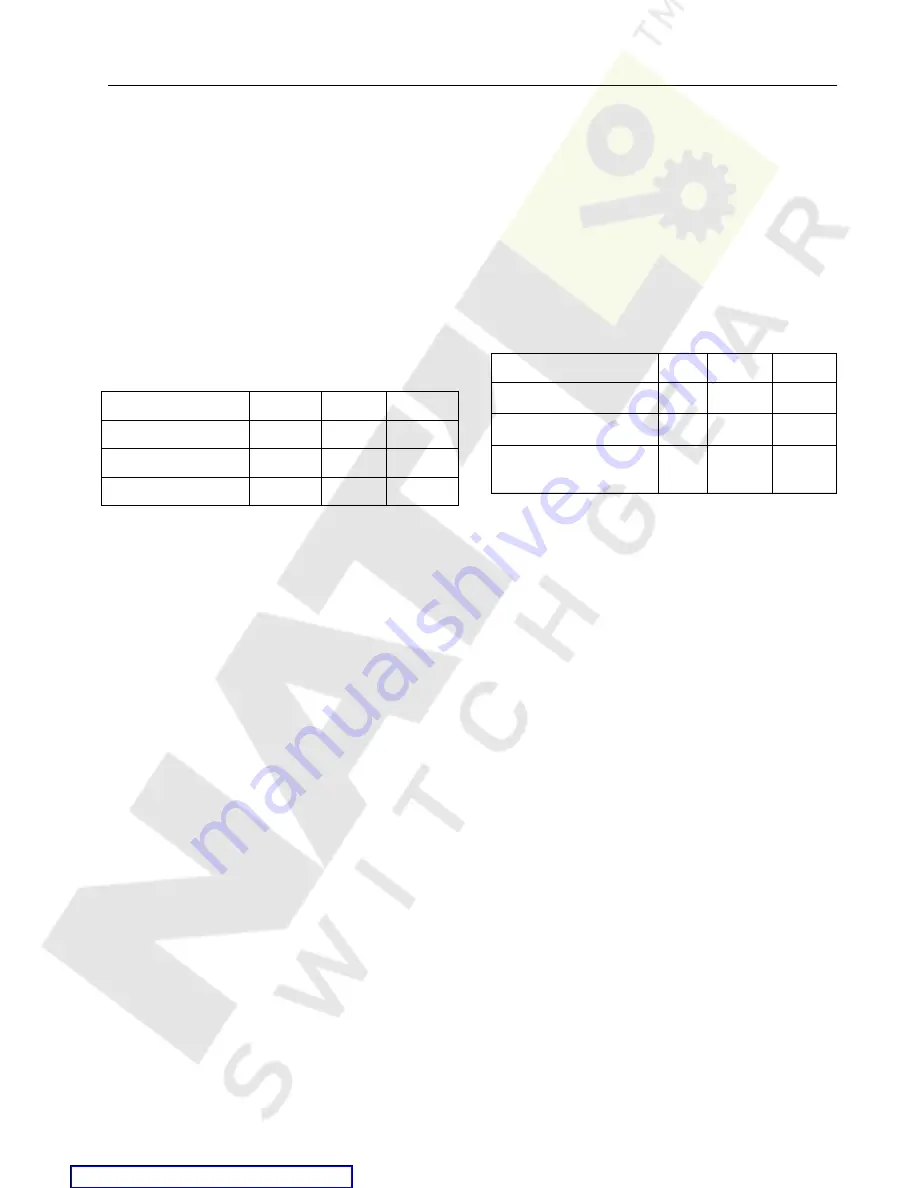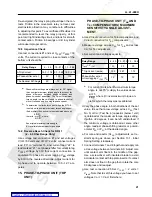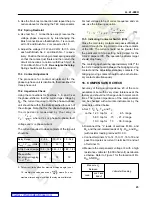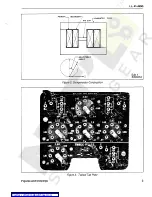
I.L. 41-490H
21
De-energized, the relay spring should open the con-
tacts. Friction in the movement, relay not level, and
electrostatic attraction may contribute to difficulties
in adjusting this point. To avoid these difficulties it is
recommended to level the relay properly, at this
point omit light indicating circuit, and look for smooth
contact action. Friction in bearings or dirt in cylinder
will cause improper action.
14.8 Impedance Check
Use test connections #1 and set V
1F2F
=V
2F3F
= 30
volts. The current required to close contacts of the
bottom unit should be:
φ
Phase-shifter settings are always set for 30
°
higher
than nominal maximum torque angle to account for
phase difference between phase-to-phase and
phase-to-neutral quantities. The 3
φ
unit maximum
torque angle is always referred to phase-to-neutral
since it receives only one single-phase current.
∆
To determine the limits for current when the MTA,
θ
,
is not equal to nominal maximum torque angle spec-
ified, multiply the nominal values tabulated above by
the ratio
, where:
θ
m= original maximum torque angle
θ
= recalibrated maximum torque angle.
14.9 Reverse Reach Check for KD-11
(.2 - 4.5 Ohm Range Only)
Use voltage test connection #1 and set voltages
V
1F2F
=50 volts and V
2F3F
=2 volts; connect current
lead “23” to “terminal 15, and current lead “22” to
lead marked “21”. Let phase-shifter for current to lag
V
1F2F
voltage by 30
°
this current connection is
equivalent to phase B current lagging V
BN
voltage
by 60
°
in the reverse directions. Adjust current for
3-phase unit to operate between 10.5–12.7 am-
peres.
15. PHASE-TO-PHASE UNIT (TOP
UNIT):
Relay Range
.2 - 4.5
.75 - 21.2 1.3 - 36.6
∆
Trip Current
15.3 - 17.6 3.3 - 3.65 1.90 - 2.16
φ
Phase-shifter set at
90˚
105˚
105˚
The Nominal M-T-Angle
60˚
75˚
75˚
θ
m
sin
θ
sin
---------------
PHASE-TO-PHASE UNIT (T
AB
AND
T
BC
COMPENSATORS) MAXIMUM
SENSITIVITY ANGLE ADJUST-
MENT.
a. Use
#5 test connection for T
AB
compensator, and
#6 test connection for T
BC
compensator.
b. Measure voltage across C
2A
for T
AB
and across
C
2C
for T
BC
adjustment.
c. Set current and voltages equal to:
∆
For current limits when
θ
m
maximum torque
angle, is not 75
˚
multiply the values above
where
β
= new maximum torque an-
gle for which the relay was recalibrated.
d. Vary the phase angle in both directions of the set
value, to see that a low voltage across C
2A
(Test
No. 5) or C
2C
(Test No. 6) capacitor (below 1 volt)
is obtained at the maximum torque angle setting.
If within
±
2 degrees, it can be left undisturbed. If
the minimum voltage is obtained at some other
angle, readjust phase-shifting resistor or potenti-
ometer P
2A
or P
2C
at the desired angle.
e. For core and reactor (XL
AC
) adjustments, set re-
straint spring as above per Section 13.1, Initial
Spring Setting (clockwise).
f. Connect terminals 7 and 8 together and apply rat-
ed ac voltage between terminals 8-9. Adjust core
until contact arm floats in the middle of the gap.
Use a screwdriver with insulated blade to avoid
accidental contact with tap plate inserts. If contact
arm does not float in the gap then rotate the core
90 degrees and readjust.
g. Use test connection #5 Set V
1F-2F
= 2 volts =
V
fault
. Note that to set this voltage you have to set
voltages V
A-1F
= V
B-2F
first where:
Relay Range
.2 - 4.5 .75 - 21.2 1.3 - 36.6
V
fault
= V
1F-2F
30
30
30
∆
Trip Current (amps)
13.9
2.97
1.72
Phase-shifter set at
current lagging V
1F-2F
(
θ
m
)
75˚
75˚
75˚
75
sin
β
sin
---------------











































